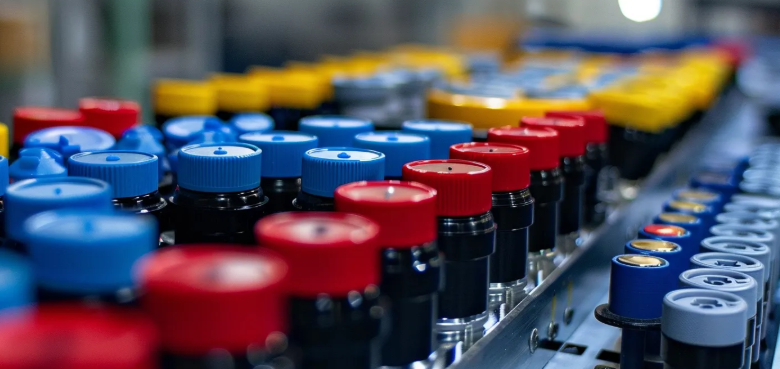Understanding Caps and Plugs: Essential Components for Every Industry

Caps and plugs might seem inconspicuous, but they are indispensable in countless industrial applications. These small components serve as protective devices, cover exposed parts during manufacturing or shipping, and ensure the integrity of equipment and machinery. They come in various materials and designs, each suited for specific tasks, from safeguarding aerospace components to sealing hydraulic systems. Whether you’re in the construction, automotive, or electronics field, understanding the nuances of caps and plugs is crucial for maintaining operational excellence. Keep reading to delve deeper into the world of these critical, yet often overlooked, industry essentials.
Understanding the Role of Caps and Plugs in Industry
Caps and plugs play a vital role in safeguarding components throughout production, transit, and storage by protecting them from dust, moisture, and contaminants. Their use is especially critical in industries such as automotive and aerospace, where even minor impurities can compromise entire systems.
These components also preserve functionality by keeping fluid systems sealed and electronics shielded from particles that could cause failures. Beyond protection, they promote workplace safety by covering sharp edges and exposed ends, reducing the risk of injuries. Their application is often required by regulations, emphasizing their importance in meeting strict industry standards for safety, quality, and reliability.
The Various Types of Caps and Plugs and Their Applications
Caps and plugs come in a wide variety of types, each designed to suit specific applications across industries. Threaded caps are commonly used in plumbing and oil sectors to secure pipe ends, while tapered plugs provide versatility by fitting multiple diameters. In electronics and aerospace, silicone options are favored for their ability to withstand extreme temperatures, whereas plastic caps and plugs dominate consumer goods manufacturing due to their cost-effectiveness.
Specialized providers like Caps And Plugs offer tailored solutions in various sizes and materials to meet industry-specific needs. These components also play an important role during maintenance, protecting parts from contaminants while machines are disassembled and reassembled.
Material Selection for Caps and Plugs: Durability and Resistance
The choice of materials in manufacturing caps and plugs depends on the demands of the application, with durability, chemical resistance, and temperature tolerance as key factors. Rubber and silicone options are valued for flexibility and high-temperature resistance, making them ideal for thermal environments. Plastic variants, often produced from polyethylene or nylon, combine resilience with cost-effectiveness while resisting chemical corrosion and sealing effectively against dust and moisture.
Metal caps and plugs, commonly stainless steel or aluminum, are selected for extreme durability, high-pressure resistance, and harsh conditions such as those in the oil and gas industry. Growing environmental awareness has also driven interest in biodegradable and recyclable materials to reduce environmental impact.
See also: The Future of Financial Technology (FinTech)
Installation and Removal Best Practices for Caps and Plugs

Proper installation of caps and plugs is critical to ensuring they function effectively. Selection begins with choosing the correct size and fit to prevent leakage or dislodgement, while also considering material compatibility with the component to avoid chemical reactions. During installation, applying controlled force is key, as over-tightening may cause damage and underfitting may compromise the seal.
Threaded caps and plugs should generally be hand tightened, followed by a tool-assisted quarter-turn for a secure fit. Removal requires careful handling to avoid harm, with heating or cooling methods used when needed. Regular inspections help identify wear, deformities, or material degradation, especially in demanding environments, ensuring timely replacements and reliable protection.
Advancements in Cap and Plug Design: Meeting Industry-Specific Needs
Innovation in cap and plug design continues to evolve with the growing demands of modern industries. As technology advances, manufacturers are creating solutions that offer ergonomic features for easier handling and installation, reflecting a commitment to efficiency and user convenience. Customization has expanded through 3D printing, allowing rapid prototyping and the production of tailored components for complex geometries.
Sustainability is also driving change, with eco-friendly materials enabling designs that support circular economies while maintaining durability and reliability. Advances in material science are further enhancing performance, producing caps and plugs capable of withstanding extreme temperatures, pressures, and chemical exposure, thereby broadening their industrial applications and functionality.
Overall, the importance of caps and plugs in various industries is underscored by their role in protecting equipment, maintaining safety, and ensuring regulatory compliance. The innovations in design and materials continue to evolve to meet the specific and often demanding needs of different sectors, making these components anything but mundane. With the right cap or plug for every job, industrial processes can be conducted more efficiently, safely, and with the necessary precision that modern operations demand.





